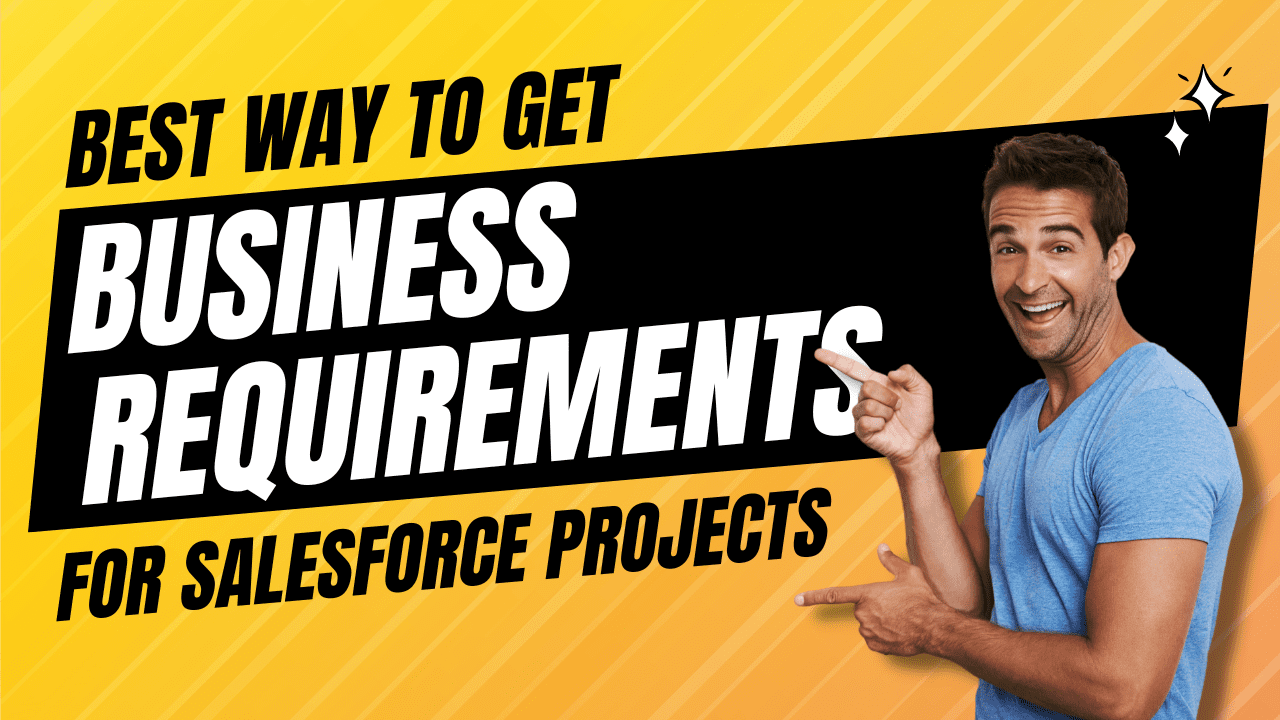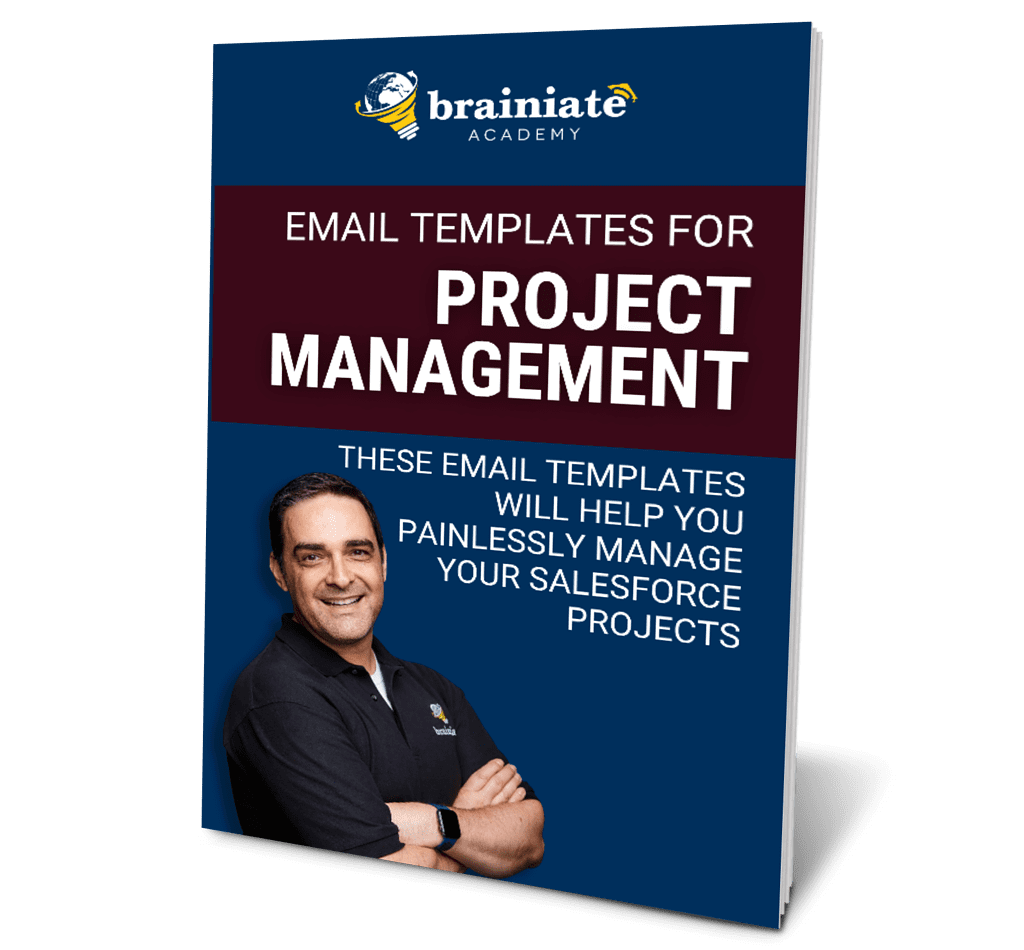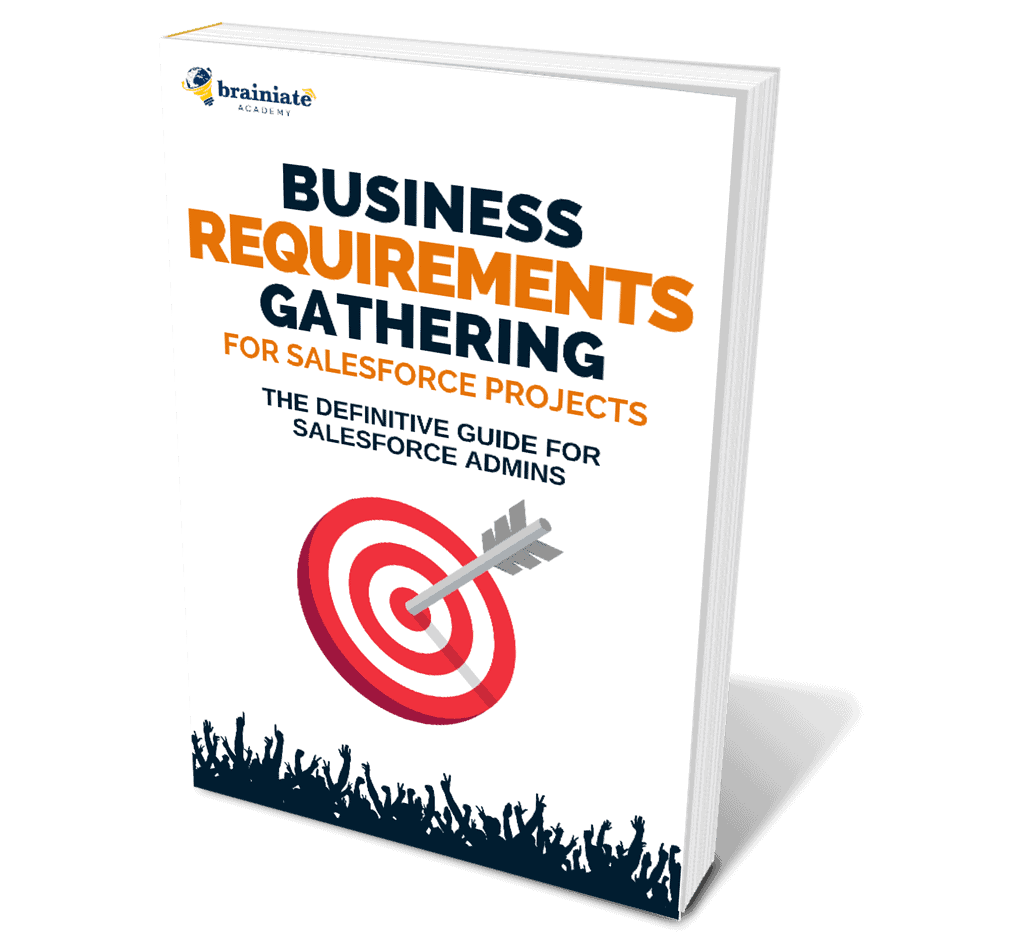What Is the Best Way to Gather Business Requirements for a Salesforce Project?

Are you about to embark on a new Salesforce project for your business? If so – congratulations, you’re taking the first step towards improved performance and productivity within your organization!
Gathering comprehensive business requirements is one of the essential steps in any successful Salesforce project.
In this blog post, we’ll walk through the best practices for collecting accurate and meaningful requirements so that you can be confident your new project will deliver all its promises — plus a little extra.
So let’s get started: what are the best ways to gather valuable information from key stakeholders throughout your company and ensure it all comes together seamlessly as part of your Salesforce strategy? Read on to find out!
What Are the Different Ways to Gather Business Requirements for a Salesforce Project?
1. One-on-one interviews
One of the most common ways to gather business requirements is to conduct one-on-one interviews with key stakeholders. This method allows you to get in-depth information about what the stakeholder wants and needs from the Salesforce project. Additionally, it can be helpful to build relationships with key stakeholders through one-on-one interviews.
2. Focus groups
Another common method for gathering business requirements is to conduct focus groups. In a focus group, a group of stakeholders is brought together to discuss the project and provide input on the requirements. This method can help get a variety of perspectives on the project.
3. Surveys
Surveys are another tool that can be used to gather business requirements. Surveys can be distributed to various stakeholders, making them a good option for collecting data from many people. Additionally, surveys can be anonymous, encouraging people to provide honest feedback.
4. Business process modeling
Business process modeling is a technique that can be used to document and understand business processes. This method can identify pain points in current processes and develop solutions for these problems. Business process modeling can also create new processes for a Salesforce project.
5. Use cases
Use cases are another tool that can be used to gather business requirements. A use case describes how a user will interact with a system to achieve a specific goal. Use cases can be used to understand the functionality needed in a Salesforce project.
6. Requirements workshops
Requirements workshops are meetings that are held with key stakeholders to discuss the requirements for a project. This method can be used to get input from stakeholders on the project requirements and to ensure that everyone is on the same page regarding the project goals.
SNAG THESE FREE RESOURCES!

Struggling to Manage Your Salesforce Projects?
Master Project Management With Our Expert Resources for Salesforce Admins.
Check out some of these FREE RESOURCES, templates, ebooks, and courses to take your project management skills to the next level and take control of your Salesforce career!
What Are the Pros and Cons of Each Method?
Pros and cons of one-on-one interviews
One-on-one interviews are a great way to gain insight into the needs of your Salesforce project. Speaking directly with stakeholders one-on-one allows you to glean information that could be easily missed out if using other types of interviews. This approach also creates more personal connections between the interviewer and stakeholders, creating a more accessible open dialogue during the interview.
However, caution should be taken when considering this type of approach as it can be time intensive, with individual interviews taking up resources, and is only sometimes cost-effective in comparison to larger groups or workshops. It can also take your focus away from other parts of the project.
All in all, weighing up the pros and cons of using one-on-one interviews to gather business requirements for a Salesforce project will benefit your organization in its journey toward success!
Pros and cons of focus groups
Utilizing focus groups for gathering business requirements in a Salesforce project can be beneficial and efficient, but it isn’t foolproof. On the plus side, you get the input of multiple stakeholders at once, which can shorten the length of otherwise tedious meetings. Focus groups are also generally easier to coordinate than individual interviews or surveys. The combination of different perspectives and experiences is often invaluable when crafting strategic solutions.
On the downside, a group dynamic might prevent certain members from fully expressing their opinion; someone (or several people) with more outspoken personalities could dominate the discussion, leaving quieter participants uncomfortable even voicing their ideas.
It’s worth bearing these pros and cons when deciding whether a focus group suits your Salesforce project.
SNAG THESE EMAIL TEMPLATES

200+ project management templates to help you get organized and increase your productivity!
Are you tired of wasting time writing the same email messages repeatedly?
I know your time is valuable, so I’ve created email templates specifically for Salesforce Admins to help you manage your Salesforce projects more efficiently.
Use these templates as a starting point or adapt them to fit your own needs. And you can cut and paste them into whatever email system you need.
Stop wasting time on menial tasks and start managing your projects more effectively.
Get access to a vast library of email templates to painlessly manage the entire project lifecycle!
Pros and cons of surveys
Surveys are a great tool to gather insights and customer feedback, but there may be better options for collecting business requirements during a Salesforce project. On the bright side, surveys can provide helpful information quickly and at scale without requiring in-depth detail. It’s a proactive approach that can help surveyors identify potential issues or improvement opportunities before implementation begins.
However, it’s important to note that as surveys do not involve direct interactions with individuals, key details could be missing from the overall picture. It’s also worth keeping in mind that surveys cannot establish in-depth relationships between customers and the company, which will help inform decisions about your project’s direction.
If you decide to use this approach, make sure you know both the clear advantages and potential drawbacks of using surveys before you begin.
Pros and cons of business process modeling
Business process modeling can be a helpful tool when gathering business requirements for a Salesforce project. On the upside, it produces a visual representation of how the different stages of operation should be handled, creating an understandable blueprint for the project. It also prevents guesswork when piecing together the project; there is less chance of misinterpreted vital elements, which could affect the success of the overall implementation.
However, it is essential to remember that business process modeling takes additional time and potential resources to cover any steps or adjustments overlooked during its conception.
Additionally, because it functions best with an experienced team and a thorough understanding of how your business operates currently and in the future, investing in this approach could mean added cost upfront for your Salesforce project.
Pros and cons of use cases
Use cases can be a great approach to gathering business requirements for Salesforce projects. They help you explore how users interact with existing data, understand different process steps, and identify gaps or improvements.
While this is a very comprehensive way to understand a project’s requirements, it’s essential to consider the drawbacks.
Creating use cases typically requires a significant amount of time, effort, resources, and money. You also must ensure that those involved in creating the use cases understand the organization’s processes and objectives.
When implemented well, use cases guarantee that all business requirements are down on paper and considered when developing custom solutions using Salesforce.
Pros and cons of workshops
Utilizing workshops for gathering business requirements for a Salesforce project is often lauded as a great strategy because of its advantages. The ability to bring stakeholders from all parts of an organization and facilitate focused collaboration on the project in one place often yields valuable results.
However, this approach has some drawbacks, such as coordination problems and scheduling conflicts. It can take time to set up workshops correctly, and having the right participants can make or break the results.
Additionally, having everyone in the same place will often lead to distractions and disruptions that could hinder progress.
Ultimately, setting up a workshop is an effective way to tap into organizational knowledge and leverage multiple perspectives when working on a Salesforce project. Still, it’s essential to prepare appropriately and manage expectations beforehand so that results are successful.
How Do You Know Which Method Best Suits Your Business and Project Needs?
Gathering the correct business requirements is essential to ensuring that the product or service you deliver meets expectations. Finding out the best method for your specific project and needs can take a bit of experimentation, so it’s essential to keep track of what works and what doesn’t.
When considering methods, be sure to look at factors like:
- time constraints,
- the complexity of the project,
- access to stakeholders, and
- familiarity with various methods by stakeholders.
Consider each requirement and develop several ideas that might work before deciding on a final method. This can help you to find a way that works well for all involved!
How Can You Ensure That the Requirements-Gathering Process Goes Smoothly and Results in Actionable Insights for Your Team?
1. Define the scope of the project.
The first step in ensuring that the requirements-gathering process is productive and efficient is to define the project’s scope. This will help ensure that all stakeholders clearly understand what the project entails and what is required to complete it successfully.
2. Identify all stakeholders.
The second step is to identify all stakeholders. This includes anyone who will be affected by the project or who has a vested interest in its success or failure. It is essential to identify all stakeholders early so they can be involved in the requirements-gathering process from the beginning.
3. Conduct initial interviews with stakeholders.
Once all stakeholders have been identified, the next step is to conduct initial interviews with them. This helps them better understand their individual needs and expectations for the project. It is important to note that not all stakeholders will be available for interviews at this stage, but those who are should be allowed to provide their input.
4. Develop a requirements document.
The fourth step is to develop a requirements document. This document should detail all of the requirements for the project, as well as any assumptions that have been made about those requirements. All stakeholders should review the document before moving on to the next stage of the process.
5. Conduct stakeholder review sessions.
Once the requirements document has been developed, the next step is to conduct stakeholder review sessions. This allows all stakeholders to provide feedback on the documentation and ensure their needs are met. These sessions can be performed in person or remotely, depending on the stakeholders’ preference.
6. Revise the requirements document as needed.
After stakeholder review sessions have been conducted, it may be necessary to revise the requirements document based on feedback received. This ensures that all stakeholders are satisfied with the final documentation and that all requirements for the project have been met.
7 . Approve The Final Requirements Documentation.
The last step in ensuring that the requirements-gathering process is productive and efficient is to approve the final requirements documentation. This gives everyone involved in the project a clear understanding of what is required to succeed. Once approved, work can begin on meeting those requirements.
🔥 SUBSCRIBE! 🔥

Get practical Salesforce advice in your inbox!
Feeling overwhelmed by everything you have to do as a Salesforce Admin?
I know how it feels.
I created the FREE Brainiate Newsletter – to help you stay up-to-date with the latest Salesforce news, advice, and product recommendations.
Sign up for my newsletter and get all that information right in your inbox – without having to search for it yourself. You’ll be able to focus on your projects with peace of mind, knowing you’re always up-to-date on the latest Salesforce updates.
Click the button below and sign up for my FREE Brainiate Newsletter today!

Next Steps
After reading this blog post, you now understand the different business requirements-gathering techniques available to you and when each method should be used in a project.
The success of your Salesforce project depends on precise requirements, so choose the proper method based on the circumstances of your project.
Let’s face it; Salesforce projects can be challenging to manage, especially when stakeholders are not engaged or business requirements keep changing.
You’re probably feeling overwhelmed and underprepared with all the challenges of managing a Salesforce project. It’s hard to hit deadlines and progress when you don’t have the right tools and resources.
That’s why I created Project Management Secrets.
This course will teach you how to handle any challenging project management situation. With lifetime access to on-demand lessons, checklists, templates, and resources, you’ll be able to take control of your projects and impress your team. Click here to learn more.
DOWNLOAD YOUR COPY!

The quick-start guide to gathering business requirements
Are you responsible for ensuring Salesforce projects run as smoothly as possible?
With the Business Requirements Gathering for Salesforce Projects: The Definitive Guide for Salesforce Admins, you can quickly get up to speed on the best practices for gathering business requirements.
This comprehensive book, written by Salesforce consultant and trainer David Giller, provides powerful methods and insights to ensure your projects are successful.
